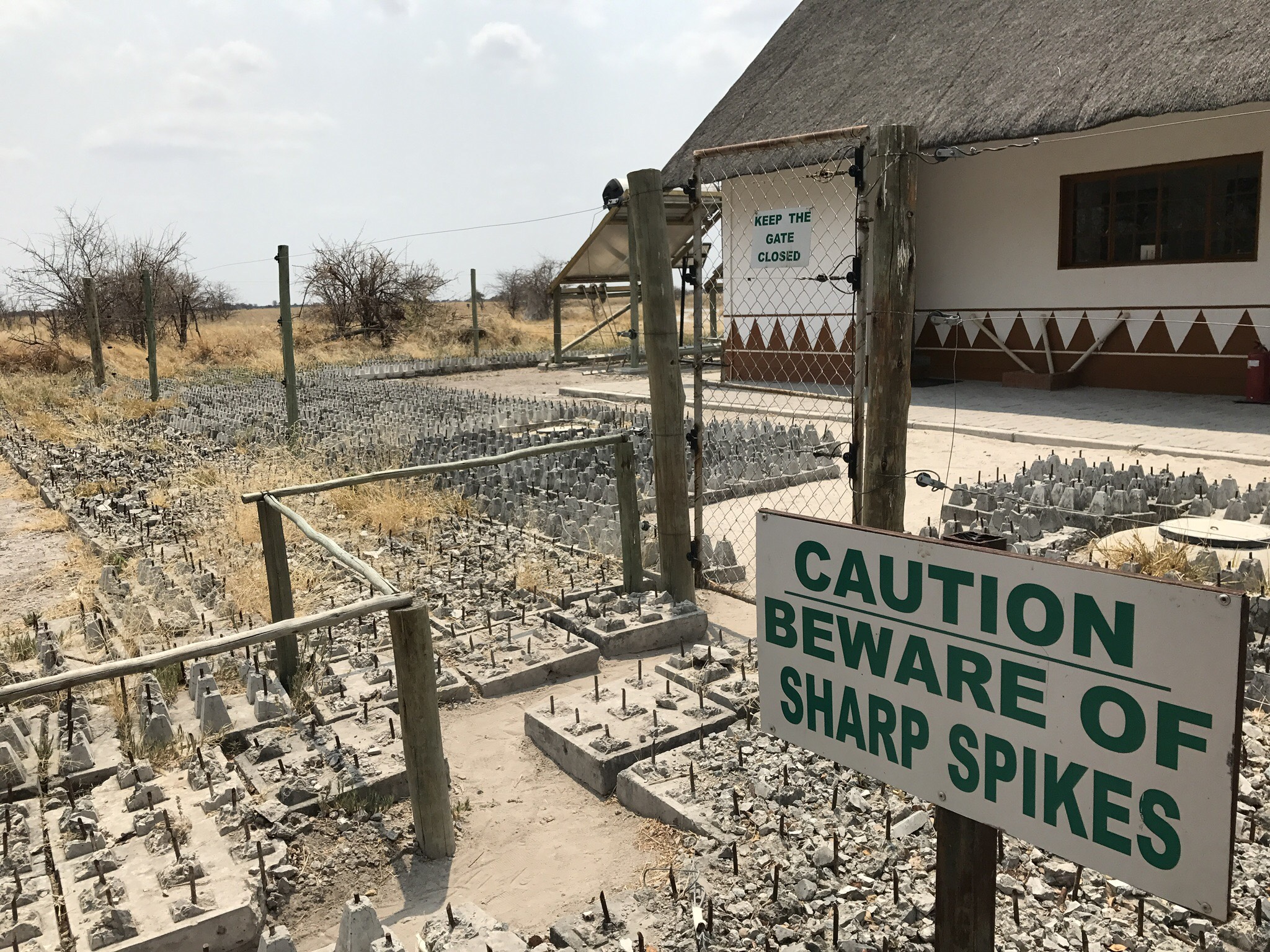Baines' Baobabs
After a night at South Camp, at Nxai Pans National Park, we had one night left in Botswana before the long drive back to Joburg.
I had seen photos of the famous Baines' Baobabs and heard wonderful things about the campsites there. So we decided that’s where we would head for our last night in paradise.
We went to reception at South Camp and enquired about Baines'. We were happy to hear that Site 3, supposedly the best site from a privacy point of view, was available...but it was going to cost us US$ 90. We thought this was quite a lot of money for a campsite with no facilities. But, as it was our last night, we decided to go for it.
Jolene the Jimny on the salt pans at Nxai Pans National Park
We packed up camp, whilst keeping an eye out for the elephants that were roaming nearby. There is no water at the Baines' campsites, so we filled up one of our 20L water containers. We also picked up firewood at the shop and jammed it into the back of the Jolene the Jimny, mangling the upholstery on the roof.
We headed off down the same sandy track we came along and about halfway back turned left towards the famous Baobabs. The landscape changes quickly from scrubby savannah grassland to the famous Kudikama Pan and its islands of Baobabs.
We stopped and took photos of the famous thousand-year-old ‘upside down trees’ that were made famous by Englishman Thomas Baines who painted the trees in 1862 during an expedition through the Kalahari.
We drove across the salt pan, making sure to follow tracks made by others and arrived at campsite number 3. Tracks4Africa is a must in this area, as there are very few signs pointing you to your campsite.
Campsite number 3 is marvelous. It is set on its own tree island of golden grassland and, of course, it is scattered with baobabs.
Jolene under the baobab at campsite 3
With camp set up, we went for a walk along the shore of our tree island and admired the endless grey expanse stretching to the horizon. The wind picked up and began to pump as the sun set, so we headed back to camp. Strong wind is apparently quite common on the pans, but you can usually count on it stopping after the sun sets.
That evening we had our last bucket shower in the wilderness and cooked Kate’s famous potjie bread and a bean stew. Thankfully we had saved a couple of bottles of wine for our last night, which we drank admiring the stars.
The next day we set-off early, as we had a long drive ahead of us. On the sand road to the main gate we came across a family of ostriches, who weren’t too pleased to see us. Mum and Dad were so quick to run off flapping their wings that they left a couple of stragglers behind.
We spent all day on the road and made it to the Groblersbrug border at sunset. We pushed on for another hour in the dark to Lephalale, where we found the Palm Park Hotel.
We were exhausted and stopped for pizza. We gave into temptation and booked an overpriced hotel room for the night. The hot showers (our first in a week!), aircon and clean white sheets were much appreciated.
Catch up on the first 3 parts of our Botswana adventure: Central Kalahari Game Reserve, Khumaga and South Camp.























